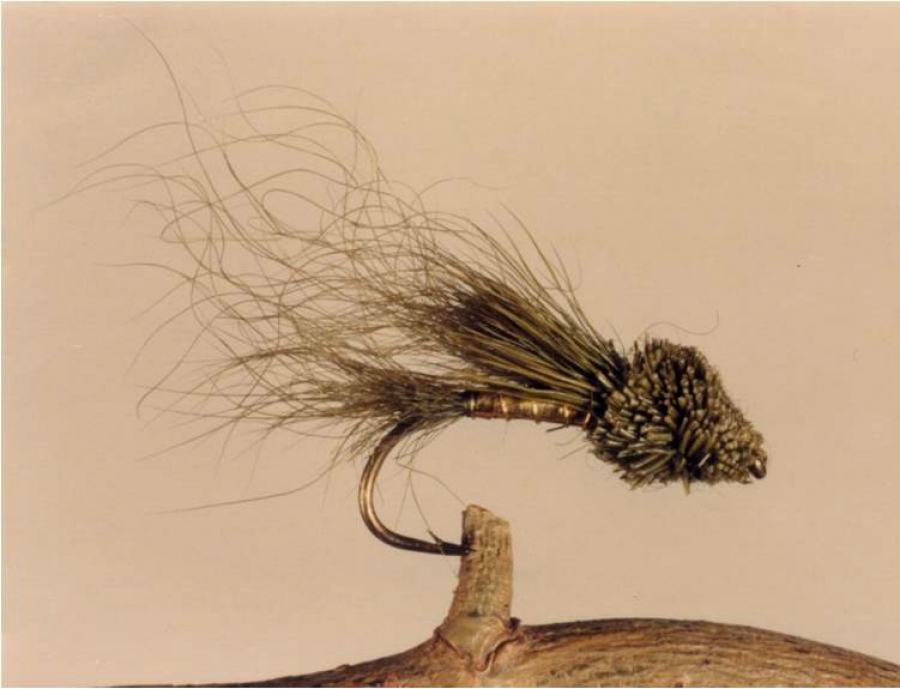In the south east area of New South Wales (Australia) there are two manmade lakes which provide world class fishing for Trout. Stocked with both Rainbow and Brown trout these hydro dams were built during the 1950’s as part of the Snowy Mountain Scheme. Both caused the inundation of townships, which were then moved to higher ground. Now and again, in low water, you can see the remains of those townships.
Lake Jindabyne and Eucumbene are large waters providing fishing sport whether bait fishing, lure casting or fly fishing. Some of the fish caught can be quite large.
In the late 1980’s and early 1990’s myself and my fishing buddies forsake going to Tasmania to fish and concentrated on fishing Lake Eucumbene which provided for challenging fly fishing as the fish moved from feeding on chironomids (buzzers) then to Dragonfly larvae (locally known as ‘mudeyes’) as they emerged in the evening while still devouring large quantities of yabbies (like a crayfish). The fish that concentrated on the latter really put on weight and grew rapidly. Some seasons the growth rate was phenomenal, especially when there was an explosion of yabbies.
In 1989 there was a population explosion of dragonflies. Their nymphs used to rise to the surface just on dark and migrate to the shore to malt by drifting on the surface and expelling water from their anal glands. Bit like jet propulsion. There are two types of dragonfly nymphs – one species which is known by fishermen as a ‘couta mudeye’ and the other as a ‘spider’ mudeye. You can see the difference below.
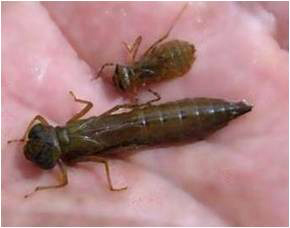
The larger nymph was resident in small farms dams while the smaller nymph inhabited larger open waters. It was the smaller nymph that we encountered in Lake Eucumbene.
There are many fly patterns developed to imitate these nymphs ,which are about 3cm in length with longer spidery legs. In the 1989 season we tried them all and with great success but sometimes we just couldn’t get it right. The one good thing about situations like we encountered in 1989 was the chance to observe.
We spent 2 full weeks fishing in the December so catching fish became a little mundane after a while. Propping myself on a log one evening, armed with a torch, I waited and observed exactly how these nymphs were behaving with the idea of trying to work out what retrieve might work best. What I encountered was quite a revelation. These dragonfly nymphs were right in the surface of the water and each propulsion of water from their anal glands caused them to move forward about 15cm while at the same time making a small bow at the front of their heads.
The flies we were using didn’t do that as they were designed to sink.
Armed with this new information, and a couple of specimens, I headed back home to try and tie something that not only represented the nymph but also how it behaved.
The ‘Aussie Muddler’ was born that evening and it has gone on to prove an effective fly in many waters where dragonfly nymphs are present and whether they are the ‘couta’ type or not. This is a photo of the original fly that was tied.
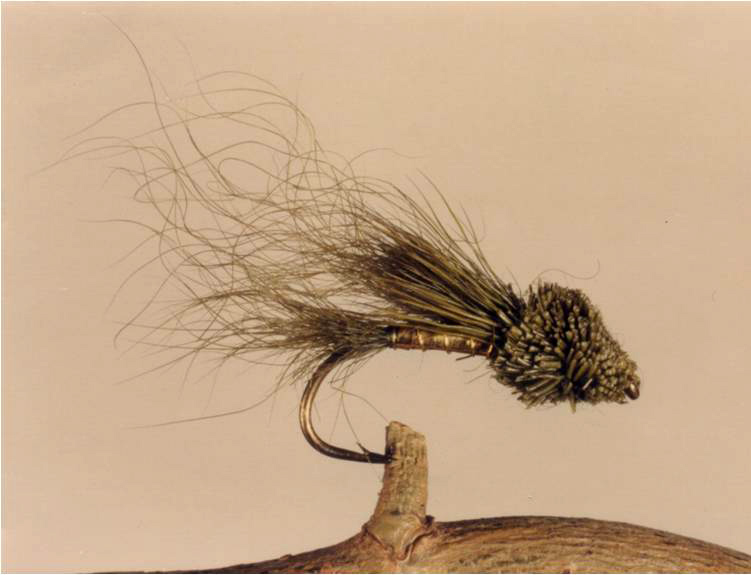
For the tail and under-wing, dyed Australian Possum was used, the body was formed with gold lurex with a gold wire rib, and the over wing and head is dyed Elk. The head being muddler in shape and the rest yellow and green gave the fly the name of ‘Aussie Muddler’.
What I wanted from this fly was buoyancy and translucency. The ‘mudeyes’ in Lake Eucumbene are quite pale green with a distinct yellow/green under side. The combination of the body materials and Possum fur achieves this as the fur does not collapse. It stays in shape and traps small air bubbles to give it translucency. The Elk hair gives the fly buoyancy but it is its shape that makes this fly special. It is trimmed flat underneath and like a cone on the top. A bit like a Dahlberg Diver. This shape allows the fly to sit in the surface but when stripped it dips down about 2cm and causes the water to bow in the front. Exactly as the dragonfly nymph does.
It can be quite disconcerting when fishing right on dark with these critters migrating in towards the shore and crawling up you as you stand in the water. It is a weird feeling to have one crawl around your neck just as a fish takes the artificial.
There are various colours of possum with the natural ‘brushytail’ being the most common:
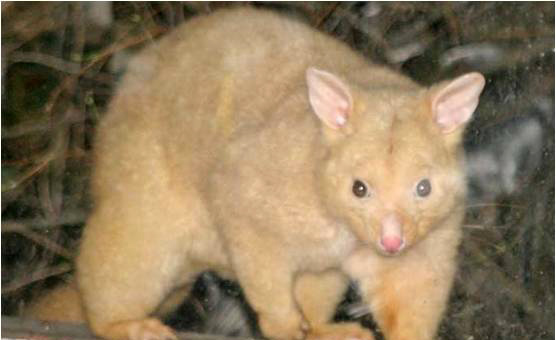
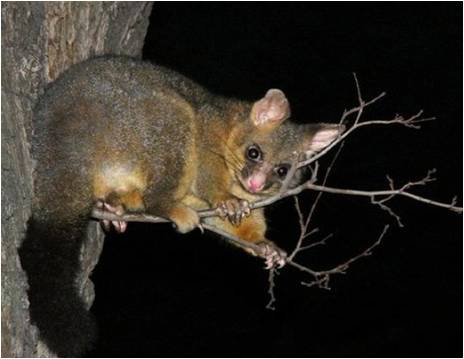
The original fly came from the dyed fur of a Golden Possum (a mutation of the Brushtail) shown on the left. Since then, I have used normal possum fur, bleached and then dyed (see below). Possums are protected in Australia so most fur come from road kill animals. These small marsupials just sit in the middle of the road and fall victim to passing vehicles. There are millions of them so no one seems to be worried. The same cannot be said of the possum in New Zealand where they are classified as a pest (they were introduced into New Zealand from Australia) so if you want to get hold of a pelt they are available from that country.
The original ‘Aussie Muddler’ was a green and gold combination. Since then I have changed it to include a variety of colour combinations. Below are some that I use depending on the colouration of the dragonfly nymphs:
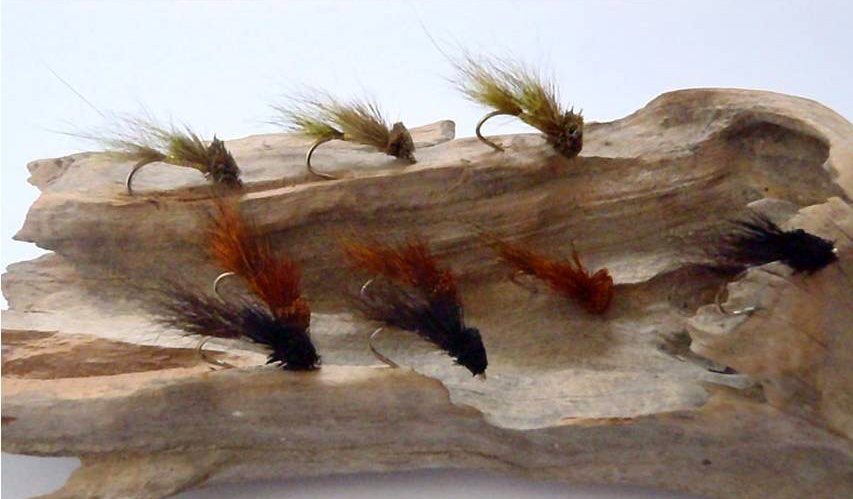
Original (top), Brown & Copper (middle), Black & Silver (bottom)
Fishing these new patterns became quite an art. We would make a comfortable cast out into the lake with the aim of trying to get the fly in a ripple and not flat water. We would then make 5-6 15cm ‘jerky’ strips before lifting the whole line up and with a single false cast place it back down. We had worked out that if a ‘take’ was made within that time then the chances diminished significantly. This was all about percentage fishing. We used Double Taper lines and I haven’t changed in all of that time. I still think they are a better fishing tool.
Tying materials
Thread – Strong black or brown thread. Originally I used Kevlar now I use Gelspun thread.
Tail and under wing – Small pinch of Possum tied short. Too much and the fly floats too high. Longer tails do work but I have not needed to change the original style. People have tried to use rabbit as a replacement but it does not do as well.
Body – Tinsel or Lurex. Gold, silver or copper. You can experiment but it is important to keep it in the shade of the fur.
Upper wing – Dyed Elk hair. I prefer Elk to Deer. This should also be kept shortish. The Dragonfly nymph has wing pads and this is what the upper wing represents.
Head – Dyed Elk hair, packed tight. Trimmed flat underneath (as close to the hook as you can get without cutting it). The remainder trimmed and shaped as a cone.
Please feel free to experiment. All I ask is you keep the name.

